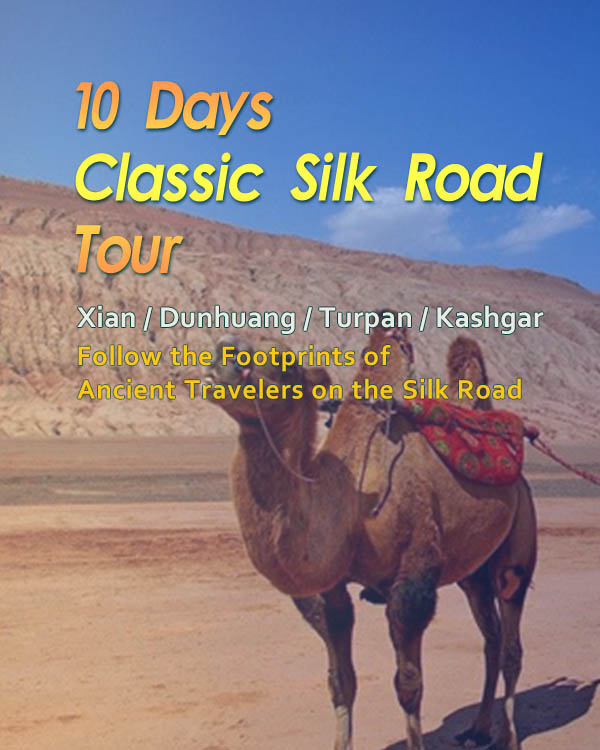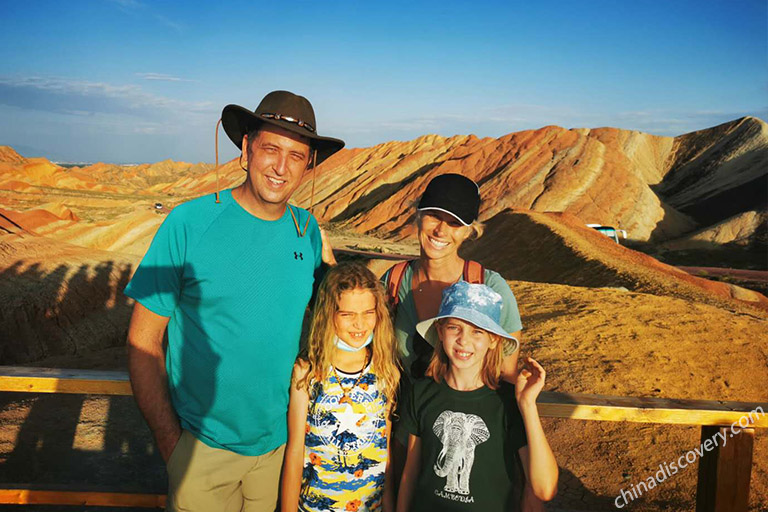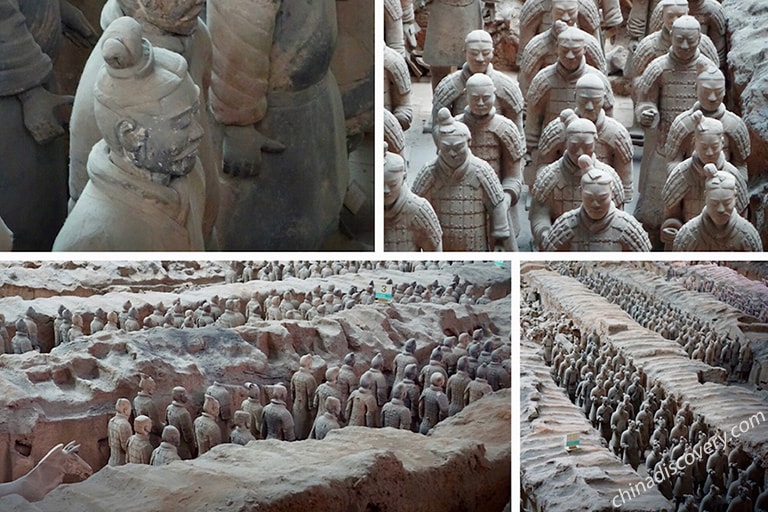Top 10 Buddhist Grottoes & Caves in China
Are you curious about how the ancient Buddhist grottoes in China were carved? Do you want to have a deep look at the exquisite art work and murals? Want to figure out what does each cave tell about?
Actually, grottoes were originally a style of Buddhism in India for practice. In 3rd century, China began to build cave that the Kizil Cave complex is believed to be the earliest Buddhist cave complex in China. It got prevailed during 5-13th centuries (Northern Dynasty, Sui, Tang, Song and Yuan Dynasty) and almost stopped carving after 16th centuries.
Nowadays, the Buddhist grottoes and caves are mainly scattered in Xinjiang, Gansu, Yellow River region and Yangtze River region and some in South China. Among them, the famous Top Four Buddhist Grottoes in China are Mogao Caves in Dunhuang, Yungang Grottoes in Datong, Longmen Grottoes in Luoyang and Maijishan Grottoes in Tianshui which all were listed as UNESCO World Heritage Sites, while the others are also worth your time and effort to visit. Numerous and different shapes of Buddhist statues and murals with big surprises are hidden in the caves, why not go now?

Top 1: Mogao Caves (Dunhuang): the Greatest Repositories of Buddhist Art
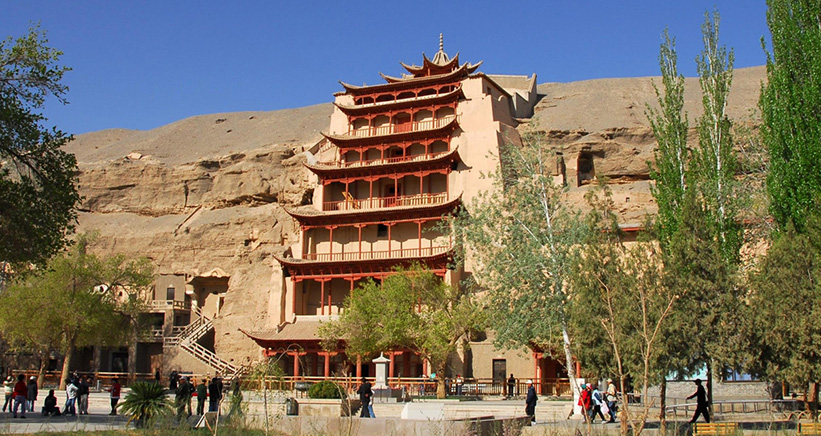
Mogao Caves (莫高窟), known as Thousand Buddha Grottoes, comprises the largest, most richly endowed and longest used treasure house of Buddhist art in the World.
Situated at a strategic point along the Silk Road, Mogao Caves is located 25 kilometers southeast of Dunhuang City. With a history over 1600 years, it was first constructed in 366 AD in Sixteen Kingdoms and represents the great repositories of Buddhist art from the 4th to the 14th century. Now, Mogao caves has 492 caves, housing about 45,000 square meters of murals and more than 2,100 painted sculptures. Among them, the highest painted sculpture is at 35.5 meters (in Cave 96) and the largest mural painting is 47 square meters (in Cave 61). For the precious, unmatched artistic, historical, cultural value, Mogao Caves was listed as the World Heritage Site in 1987.
Highlights to Explore
To fully explore Mogao Caves and have deep understanding about the Buddhist art, you’d better spend at least half day here. Besides, it is a wise choice to visit Dunhuang Digital Exhibition Center to enjoy “Thousand-Year Maogo” and “Dream Buddhist Land”. You won’t miss the architectures, stucco sculptures, wall paintings, silk paintings, calligraphy, etc. on the screen and in reality.
Outstanding Caves & Buddha Statues
- Cave 61: It was built in Five Dynasties (907-960AD) which is one of the largest caves (14.1m deep and 13.57m wide) in Dunhuang. It features the gorgeous paintings with huge size and majesty. This cave is known as the Manjusri’s Hall.
- Cave 130: It was built in High Tang (705-781AD). This cave contains a colossal Buddha statue with 26 meters high of Maitreya seated with pendent legs. It is called the Southern Giant Buddha which is the third largest stone Buddha in the world.
- Cave 148: It was built in High Tang (705-781AD). It has a transverse rectangular layout and a vaulted roof. A giant reclining Budhda has 14.4 meters long signifying the Mahaparinirvana (the great completed nirvana).
- Cave 302: The Sui dynasty contains one of the oldest and most vivid scenes of cultural exchanges along the Silk Road, depicting a camel pulling a cart typical of trade missions of that period.
- Cave 428: This central-pillared cave is the largest constructed built in Northern Zhou Dynasty (557-581AD). The murals tell the jataka tales, preaching scenes, the Enlightenment, the Nirvana, etc.
- Cave 323: It was constructed in Early Tang-Song Dynasty. It is special for the murals illustrating the history of Buddhism in China. On the north wall is the story of Zhang Qian being dispatched to the Western Region by Emperor Wu. And the south wall tells “Two Stone Buddhas Floating on the River” and the bronze Buddha found in 326AD in Yangzhou.
Special Caves
The eight special caves are No. 45, No. 57, No. 156, No. 158, No. 217, No. 220, No. 254, No. 275, No. 321, No. 322. These special caves are no need to book tickets in advance.
- Cave 45: the lifelike statues and portraits of Bodhisattva and other paintings expressing the life situation of that period.
- Cave 220: fabulous paintings of princes from various countries visiting the very prosperous ancient China, which indicated that China was not only in very good prosperity but holding an open heart to the outside regions during then.
- Cave 254: It was built in Northern Wei Dynasty (439-534AD). The calm azure color will attract you most. The murals are mostly depictions of the Jataka, previous life stories of the Buddha.
- Cave 275: It was one of the oldest caves built in Northern Liang (421-439AD). It has a Maitreya Buddha statue in the center who with clam expressions sits cross-ankled. It tells about the stories of Buddhism and the clothes as well as ornaments on the figures reflects the frequent communication between Chinese people and the Western countries.
- Cave 57: admire the famous most beautiful Bodhisattva.
- Cave 217: featured paintings still in bright color of mountains and water styles.
Location
Mogao Town, Dunhuang City, Gansu Province. It is about 25 kilometers from Dunhuang City.
How to Get There
For independent travelers, you can take public bus from Dunhuang Hotel which departs every half hour and charges 8 RMB. Taxi is also available, and may charges about 40 RMB.
Recommended Trips:
>> 4 Days Classic Dunhuang Tour (Dunhuang)
>> 8 Days Gansu Highlights Tour (Lanzhou – Xiahe – Jiayuguan - Dunhuang)
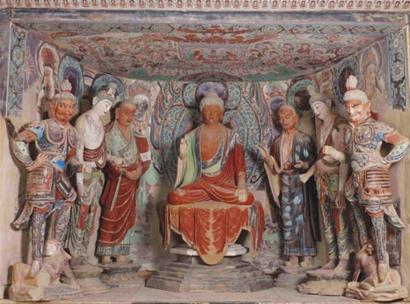


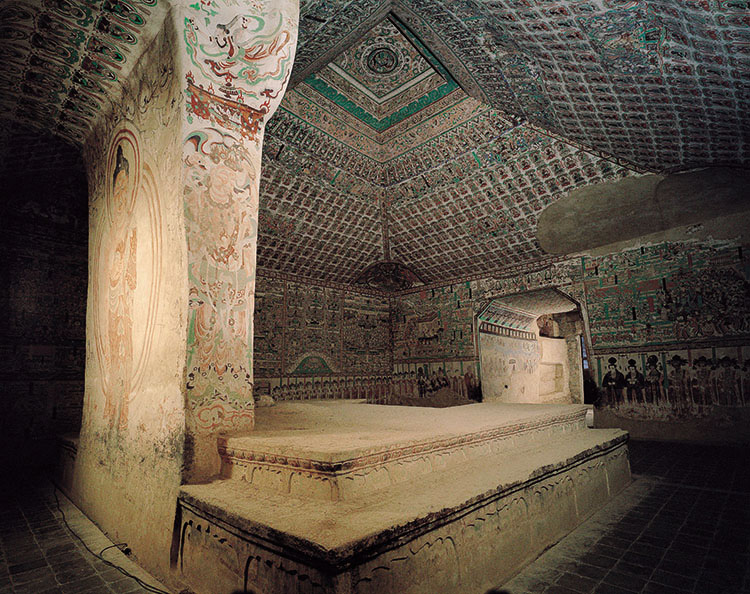
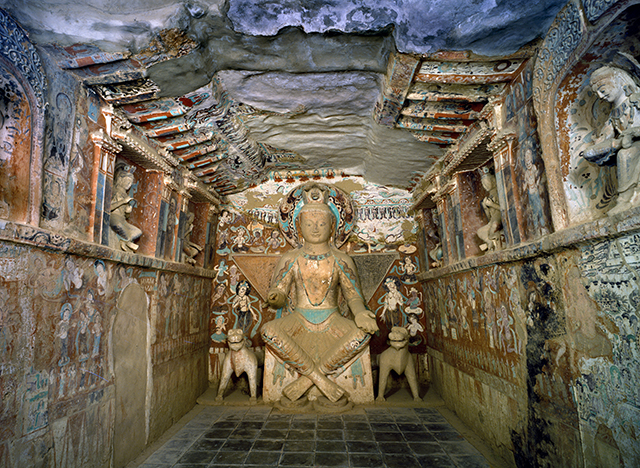
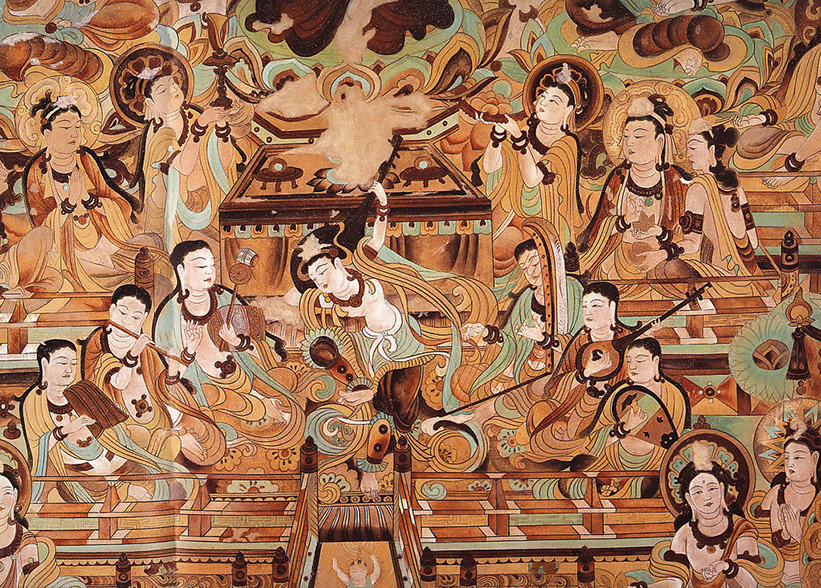
Top 2: Yungang Grottoes (Datong): Example Cave in the 5th & 6th Century

You can’t say you have been to Datong unless you have visited Yungang Grottoes (云冈石窟). Located 16 kilometers to the west of Datong City, Yungang Grottoes represents the outstanding achievement of Buddhist cave art in China in the 5th and 6th centuries. It was not only listed as one of the Top Four Great Grottoes in China, but inscribed as a UNESCO World Heritage Site in 2001.
Yungang Grottoes was first constructed in Northern Wei Dynasty since Wencheng Emperor (460AD), with a history over 1500 years. During this early period, it was built the cave 16 to cave 20 created by Tao Yao, with their strict unity of layout and design, constituted a classical masterpiece of the first peak of Chinese Buddhist art. It have played an important role among early Oriental Buddhist Grottoes and made a far-reaching impact on Buddhist cave art in China and East Asia. And now, there are 45 caves, 252 niches and 51,000 statues in total that travelers can fully explore this spectacular site and have better know about Buddhism.
Highlights to Explore
It is a nice choice to spend about 3 hours to half day exploring the outstanding caves and walking around. You can follow the regular route to explore: Tan Yao Square (昙曜广场) – Lifo Avenue (礼佛大道) - Lingyan Temple (灵岩寺) – Stone Buddha Temple (石佛古寺) - Premier Zhou Enlai Memorial Hall (周总理纪念室) - Grottoes (Caves Area) - Yungang Shadow Puppets Museum (皮影、木偶馆) - Yungang Gallery (云冈陈列馆) - Performing Arts Center (演艺中心) - Food & Money Street (食货街).
Amazing Caves & Buddha Statues
- Cave 5: Cave of Great Buddha. The 17 meter high sitting Buddha is the largest one among all of these in Yungang Grottoes.
- Cave 6: It is the twin cave of Cave 5. Built in 471-494AD, this is the Cave of Sakyamuni praised as “the most spectacular one in Yungang”. It enshrines a standing Buddha and two Bodhisattavas and tells the story from the birth of Buddha, how he became a monk and then to the Buddha.
- Cave 20: Called White Buddha Cave built in 460-470AD. This huge Buddha stands 13.7 meters high, with Usnisa on the head, broad forehead, round face, long eyes, high-bridged nose and moustache, with his hands in the mudra of meditation. It could be the representative work of the sculptural art in Yungang Grottoes.
- Cave 15: It is also called “Thousands of Buddha” built in 494-525AD. Now, there are more than ten thousands of Buddhas which are designed in little sitting Buddhas, putting in an order organization.
Location
Wuzhou Mountain, Urban Area, Datong, Shanxi Province, China. It is about 16 kilometers from Datong City.
How to Get There
Travelers can take bus or taxi to transfer from downtown area to Yungang Grottoes. 1) No.3 bus can directly take you to Yungang Grottoes. 2) If by taxi, it takes about 35~40 minutes to Yungang Grottoes.
Recommended Trips:

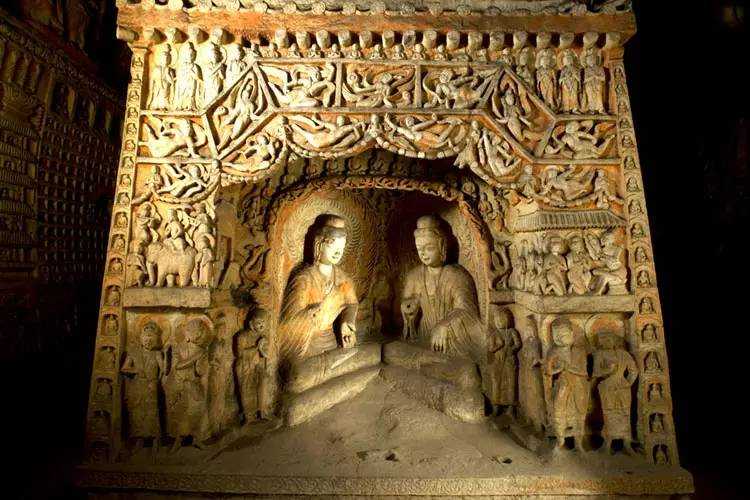


Top 3: Longmen Grottoes (Luoyang): Most Impressive Art of the Late Northern Wei & Tang Dynasty
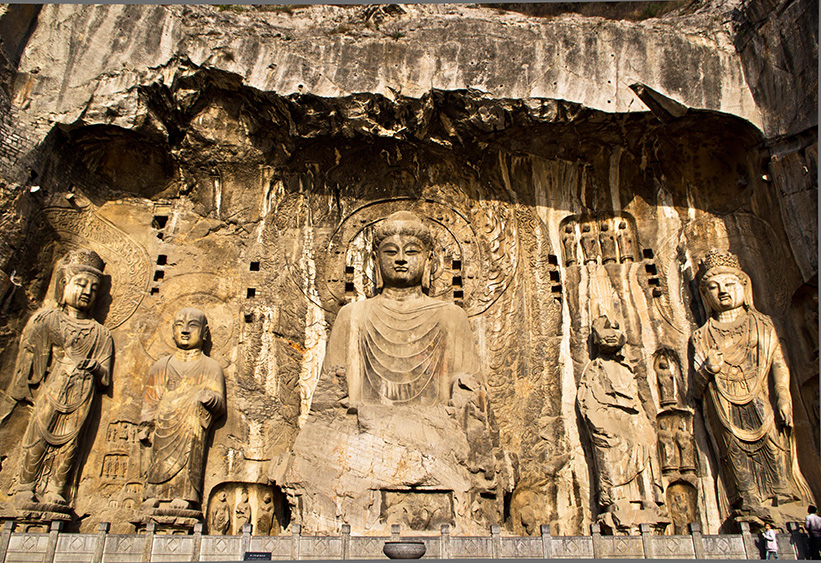
Longmen Grottoes (龙门石窟), located 12 kilometers south of Luoyang City, is one of the finest examples of Chinese Buddhist art. In 2000, it was listed as a UNESCO World Heritage Site and described as “An Outstanding Manifestation of Human Artistic Creativity”. First built in Northern Wei Dynasty in the reign of Xiaowen Emperor (孝文帝), it has developed in Eastern Wei, Western Wei, Northern Qi, Sui, Tang, Five Dynasties and Song Dynasty. That’s to say, the grottoes and niches of Longmen contains the largest and most impressive collection of Chinese art of the late Northern Wei and Tang Dynasties (316-907AD). Now, Longmen Grottoes has 20 caves and 2345 niches carved into the steep limestone cliffs over 1 km long stretch. Moreover, there are more than 100,000 Buddhist stone statues, 60 stupas and 2800 inscriptions carved on the steles. To enjoy the spectacular caves and Buddha statues and know the sightseeing route, please go and check our Longmen Grottoes.
Location
Longmen Town, Luolong District, Luoyang City, Henan Province. It is located 12 kilometers south of Luoyang City.
How to Get There
For independent travelers, you can take bus No. 99, 57, 37, 29, 70 to reach Longmen Grottoes. If by taxi, it takes around 20 minutes to get there.
Recommended Trips:

Top 4: Maijishan Grottoes (Tianshui): Large-scale Clay Sculpture Museum with 1600 Years
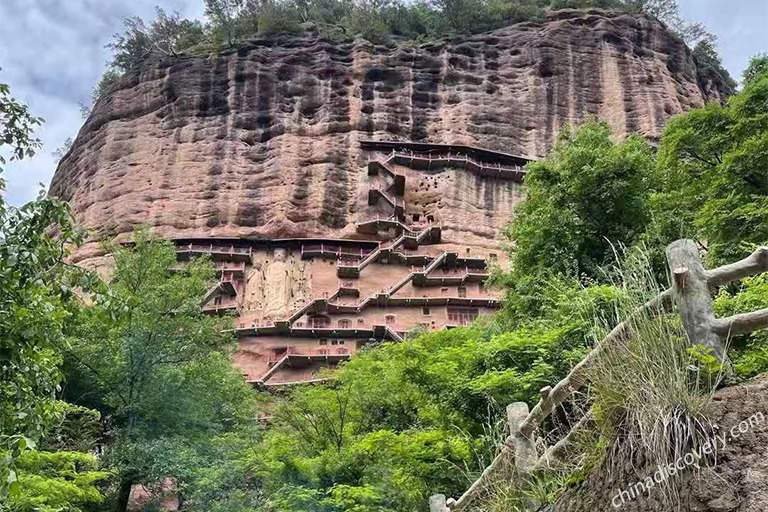
If Mogao Caves is a huge paradise for murals, then, Maijishan Grottoes (麦积山石窟) is the Gallery of Oriental Sculpture Art. It is not only reputed as one of the Top Four Greatest Grottoes in China, but also listed as a part of “Silk Roads: the Routes Network of Chang’an-Tianshan Corridor”.
First built in Later Qin (384-417AD) and extended construction over 12 dynasties, this example of rock cut architecture contains over 194 caves, 7,200 Buddhist sculptures, over 1300 square meters murals and more than 70 percent caves were excavated in the North Dynasty. The sculpture is as large as 16 meters high, as small as 10 centimeters are excavated on the cliff about 30-80m high from the ground and they have embodied the features of sculptures over thousand years, reflected the process and development of clay sculptures. It is worth your time and effort to explore Spectacular Maiji peak, exquisite clay carving temple building under cliff, peculiar landform - the harmonious landscape of mankind and nature.
Highlights to Explore
Maijishan Grottoes is divided into East Cliff Area (54 caves) and West Cliff Area (140 caves). Travelers can explore the Cave of Nirvana, the 32-meter Corridor of Thousand Buddhas, Sanhua Hall, Seven Buddha Pavilion in Easy Cliff Area; appreciate the outstanding Ten Thousands Buddha Hall, Heaven Cave, Cave 44, 121, 123, 127, 165 in West Cliff Area.
Location
Maijishan Scenic Area, Maiji District, Tianshui City, Gansu Province. It is about 45 kilometers southeast of Tianshui City.
How to Get There
For independent travelers, you can take bus No.60, 34 to reach Maijishan Grottoes. If by taxi, it takes about 1 hour to get there.
Recommended Trips:
>> 4 Days Maijishan Grottoes & Lanzhou Culture Tour (Tianshui - Lanzhou)
>> 9 Days Ancient Silk Road Treasure Tour (Tianshui – Lanzhou – Zhangye – Jiayuguan – Dunhuang)
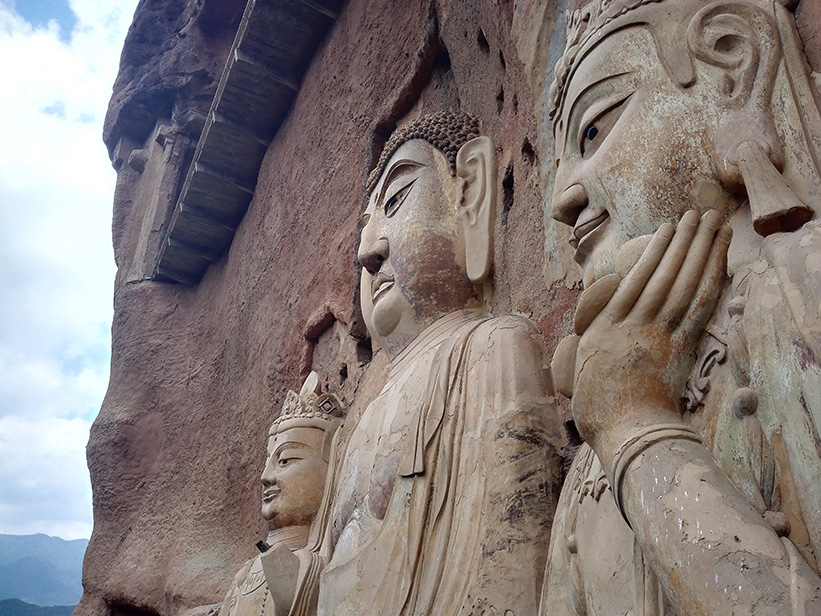

Top 5: Dazu Rock Carvings (Chongqing): Five Clusters Dating from the 9th to 13th Centuries
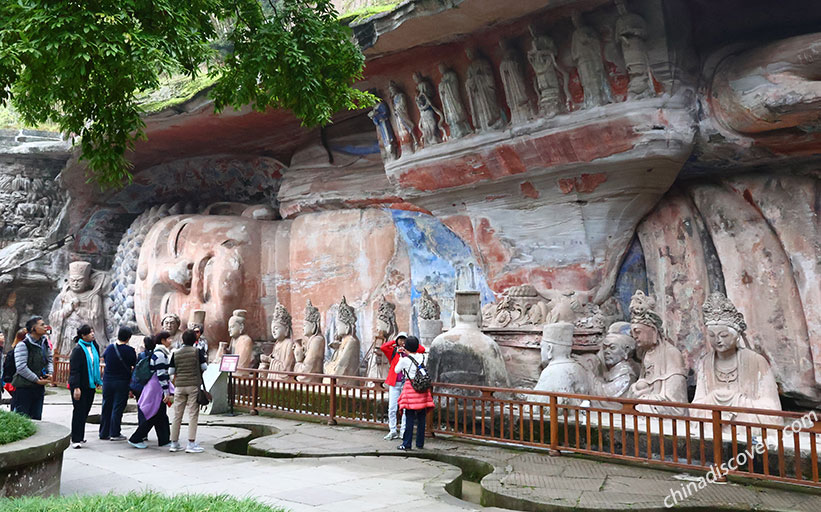
Dazu Rock Carvings (大足石刻), located in Dazu District of Chongqing, has high reputation as same as Mogao Caves, Yungang Grottoes, Longmen Grottoes and Maijishan Grottoes. Besides, it belongs a UNESCO World Heritage Site as well as one of the Top Eight Grottoes in the World.
Dazu Rock Carvings have five clusters dating from the 9th to 13th centuries, with more than 10,000 carvings depicting themes of Tantric Buddhism, Taoism and Confucianism. Travelers who come to Dazu Rock Carvings will be impressed by the grand scale, aesthetic quality and rich diversity of subject matter and get to know the great change in and development of cave temple art and religious beliefs in China 1100 years ago.
Highlights to Explore
Dazu Rock Carvings has five clusters named Baodingshan Rock Carvings (宝顶山石刻), Nanshan Rock Carvings (南山石刻), Beishan Rock Carvings (北山石刻), Shizhuanshan Rock Carvings (宝山石刻) and Shimenshan Rock Carvings (石门山石刻). Among them, Baodingshan Rock Carvings and Beishan Rock Carvings are highly recommended to visit.
Thousand-hand Bodhisattva
The Thousand-hand Bodhisattva, built in late Tang and early Song, is the most famous among the Dazu Rock Carvings. This statue has 1007 hands, making the largest number of hands in the world. At 7.7 meter high and 12.5 meter wide, the Thousand-Hand Bodhisattva sits calmly with an eye in each hand in different positions, and holding different sacred vessels such as the treasure mirror, rosary, scarf, treasure vase, lotus and the treasure sword, representing the many abilities to watch out and render assistance to the people in the world. In 2015, it has been gilded and got recovered with over 1000,000 gold foils.
Location
Baoding Town, Dazu District, Chongqing. It is about 97 kilometers from Beishan Rock Carvings, 103 kilometers from Baodingshan Rock Carvings when driving from Chongqing downtown area.
How to Get There
Long distance buses are available from Chongqing to Dazu. For independent travelers, they can go to Chongqing Bus Station at 07:30, 08:30 to reach Dazu Rock Carvings area. If by taxi, it may take at least 300 Yuan. The time needs around 2 hours. Know moew about How to Get to Dazu Rock Carving from Chongqing >>
Recommended Trip:



Top 6: Yulin Grottoes (Dunhuang): Twin Cave of Mogao Caves
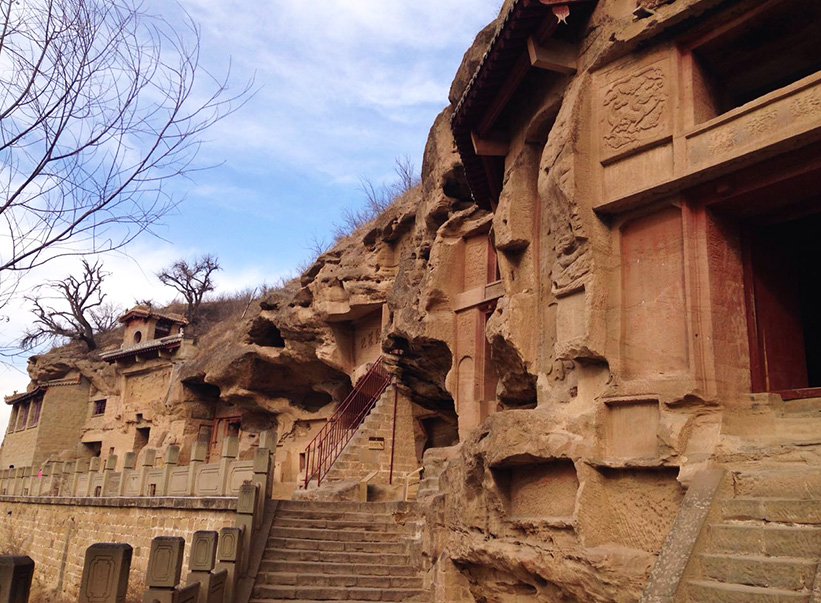
Yulin Grottoes (榆林石窟), also called Ten Thousand Buddha, is said to be the twin cave of Mogao Caves which is similar in style of caves, subjects and artistic style. There is no exact construction time to first built the grottoes, but it estimates to be built before Sui-Tang Dynasties. It was listed as a part of “Silk Roads: the Routes Network of Chang’an-Tianshan Corridor”.
Now, Yulin Grottoes is composed of 43 caves - 32 caves in East Cliff Area and 11 caves in West Cliff Area, with 272 painted sculptures, 5650 square meters murals. For the spectacular caves, there are 14 caves built in Tang Dynasty among them Cave 25 is the most well preserved one; 23 Caves built in Five Dynasties and Northern Song Dynasty; and 16 caves built in Western Xia and Yuan Dynasties.
Travelers come to visit Yulin Grottoes can have a deep look at Cave 5, 11, 12, 13, 17, 19, 26; and you may have chance to enter Cave 14, 15, 16, 23 and should pay extra charge for special Cave 2 (100 Yuan), Cave 3 (150 Yuan), Cave 4 (100 Yuan), Cave 25 (200 Yuan).
Location
70 kilometers south of Guazhou County, Jiuquan City, Gansu Province. It is about 168 kilometers away from Dunhuang City and 171 kilometers from Mogao Caves.
How to Get There
This is no direct bus to Yulin Grottoes from Dunhuang City. It is recommended to take a taxi or use our private transfer service to visit Yulin Grottoes.
Recommended Trip:
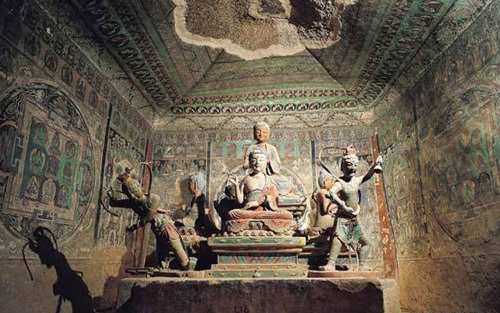
Top 7: Binglingsi Grottoes (Gansu): Ten Thousand Buddha First Built in Western Qin
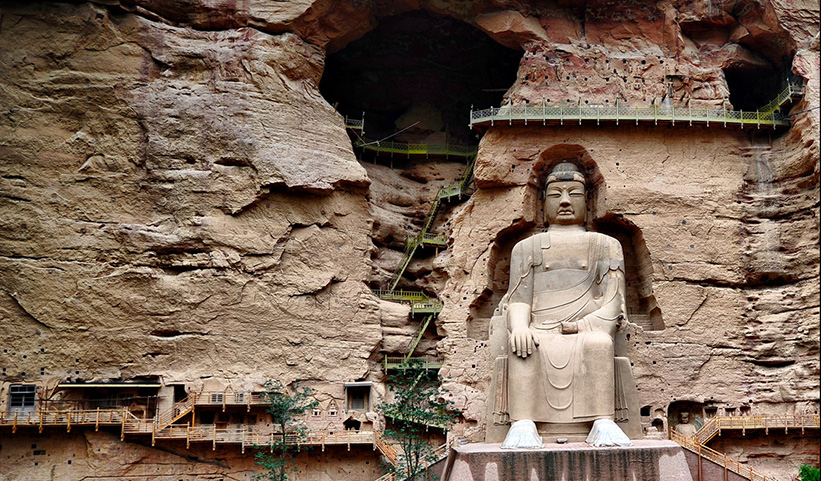
The name of “Bingling” means ten thousand Buddha in Tibetan language. In 2014, Binglingsi Grottoes was listed as a part of “Silk Roads: the Routes Network of Chang’an-Tianshan Corridor”, the World Heritage Site by UNESCO.
Binglingsi Grottoes (炳灵寺石窟) was first built in Western Qin in 430AD and continuously went on expansion on a massive scale through the dynasties of Northern and Western Wei, Northern Zhou, Sui, Tang, Yuan, Ming and Qing. At present, it has 183 niches, 694 stone sculptures, 82 clay sculptures and about 900 square meters murals.
Travelers who pay a visit to Binglingsi Grottoes can visit the stunning Western Qin Dynasty Cave 169, 192 and 195; on the north wall of Cave 169 has kept inscriptions in the year of Western Qin which stands for the earliest preface for grottoes. When visiting North Wei Dynasty Cave 126, 128, 132, you can appreciate the style of Buddhism in central plain. While, there are 135 caves built in Tang Dynasty and among them Cave 3, 4, 49-58, 64, 147 and Cave 171 are outstanding. The Cave 171 has a giant Buddha standing 30 meters high. Many exquisite Buddha statues and murals are waiting for you to discover! The surprises are hidden, why not come?
Location
35 kilometers southwest of Yongjing County, Linxia Hui Autonomous Prefecture, Gansu Province. It is about 167 kilometers from Lanzhou City.
How to Get There
This is no direct bus from Lanzhou to Binglingsi Grottoes. Travelers should first go to Liujiaxia Dam and then take a yacht on the dam to tour the Binglingsi Grottoes. It is recommended to use our private transfer service to visit Binglingsi Grottoes.
Recommended Trip:
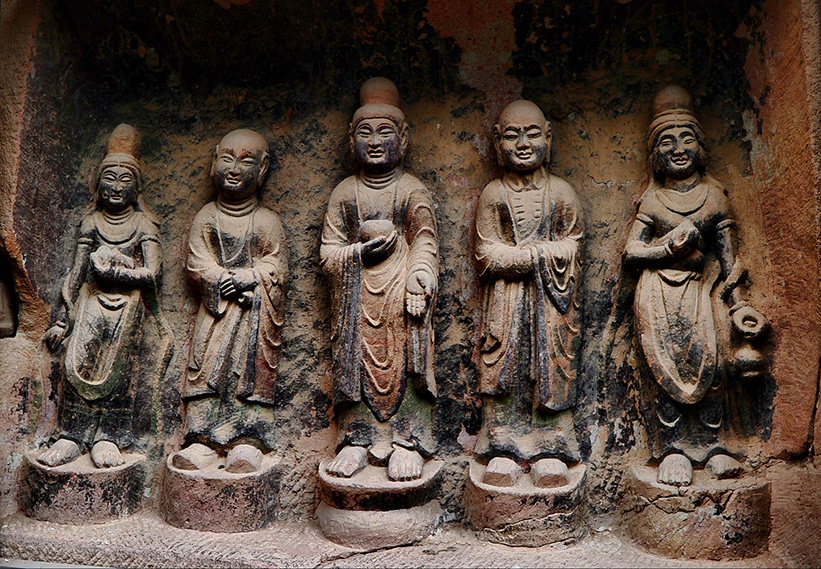
Top 8: Bezeklik Thousand Buddha Caves (Turpan): Buddhist Treasures of Uyghurs of Qocho Kingdom
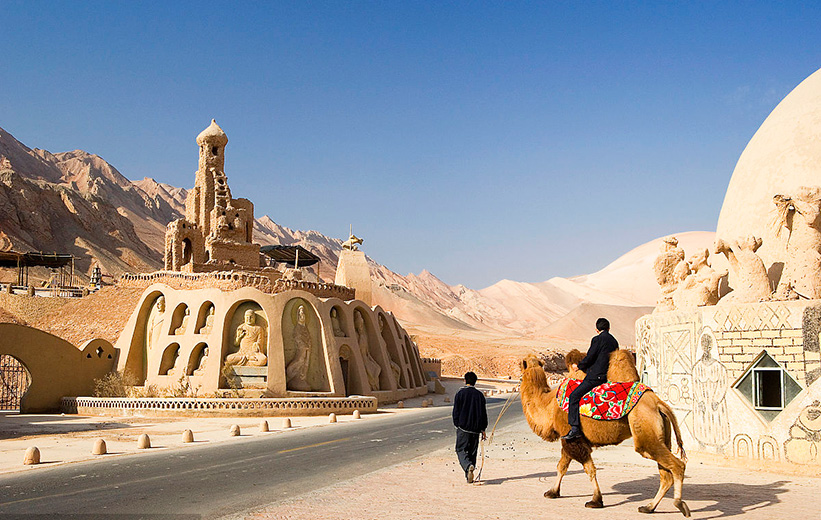
Bezeklik Thousand Buddha Caves (柏孜克里千佛洞), has the largest number of caves, most abundant of murals among Gaochang grottoes. It is located between the cities of Turpan and Loulan at the northeast of the Taklamakan Desert near the ancient ruins of Gaochang in the Mutou Valley, a gorge in the Flaming Mountains. The Buddhist grottoes can date from the 5th to 14th century and now there are 83 caves, 1200 square meters of murals and over 40 caves with murals. Some murals show a large Buddha surrounded by other figures, including Turks, Indians and Europeans.
With a history over 1500 years, Bezeklik Caves is the precious relic for Buddhist Uyghurs of the Kingdom of Qocho. Travelers who visit Bezeklik Caves should pay attention to the Cave 18, 29 and 48 which belongs to the caves in 499-640AD in the reign of Oocho Kingdom; take a look at Cave 16, 17, 25, 27, 31, 42 and 69 which shows the new style of Tang Dynasty; While Cave 14, 20, 31, 33, 39, 41, 82 that you can find the relics of Oocho Kingdom with various subjects.
Location
5 kilometers north of Flaming Mountains, Gaochang District, Turpan City, Xinjiang. It is about 39 kilometers from Turpan City.
How to Get There
This is no direct bus to Bezeklik Caves. If by taxi, it takes around 40 minutes and costs about 50 Yuan. It is recommended to use our private transfer service.
Recommended Trip:
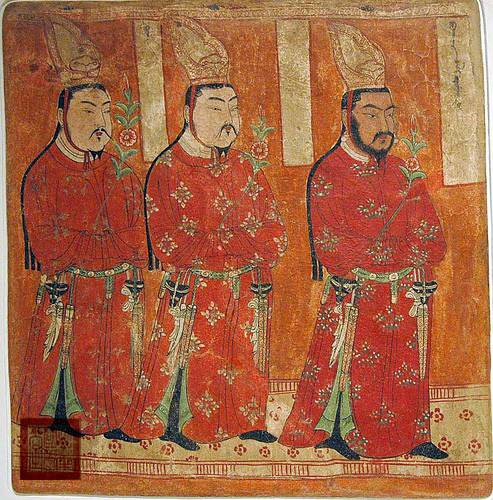
Top 9: Kizil Caves (Xinjiang): The Earliest Buddhist Cave in China
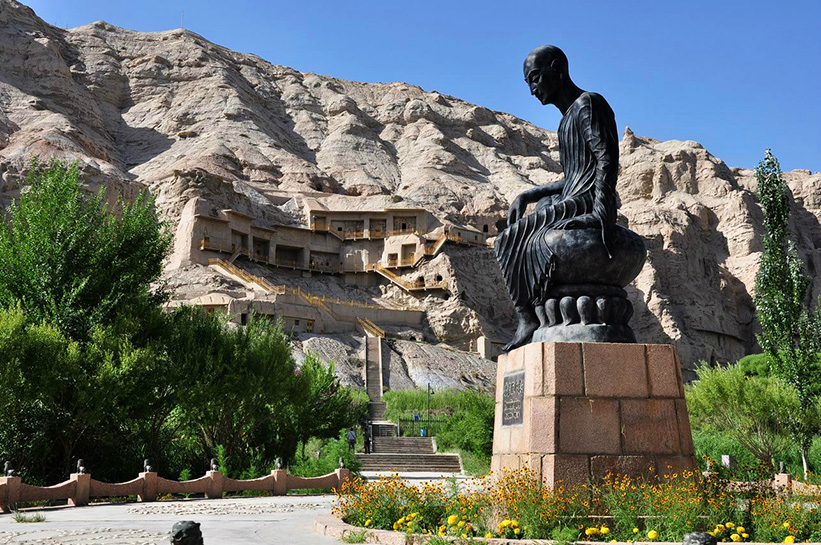
Kizil Caves (克孜尔石窟), also called Qizil Caves or Kizil Thousand Buddha Caves, is the living fossil of Kucha (龟兹) Ancient Kingdom located on the ancient Silk Road. In 2014, Kizil Caves was listed as a part of “Silk Roads: the Routes Network of Chang’an-Tianshan Corridor”, a UNESCO World Heritage Site.
The Kizil Cave complex is believed to be the earliest major Buddhist cave complex in China and the development is said to have occurred between the 3rd and 8th centuries A.D. under the ancient Tocharian Kingdom of Kucha. According to the carving time, it is 300 years earlier than Mogoa Caves.
Highlights to Explore
Kizil Caves has four clusters named Gudong Area, Guxi Area, Gunei Area and Houshan Area, and has 236 known cave temples carved into the cliff from east to west, spanning a length of 3 kilometers (1.2 miles). Like other Buddhist rock-cut cave complexes, the caves at Kizil may be divided into two major categories: monastic cells which were simple and unadorned, and halls of worship which were often sumptuously decorated with murals and sculptures. At present, around 135 are still relatively intact and only 6 caves can be visited.
Location
Kizil Township, Baicheng County, Aksu Prefecture, Xinjiang. It is about 825 kilometers from Urumqi, and 687 kilometers from Kashgar.
How to Get There
Flights are available between Urumqi and Qiuci. Travelers can take a flight at 12:35, 14:00, 20:50 from Urumqi to Qiuci. Then, the distance between Kuche Qiuci Airport and Kizil Caves is about 68 kilometers and you can go for a taxi (about 75 mins).
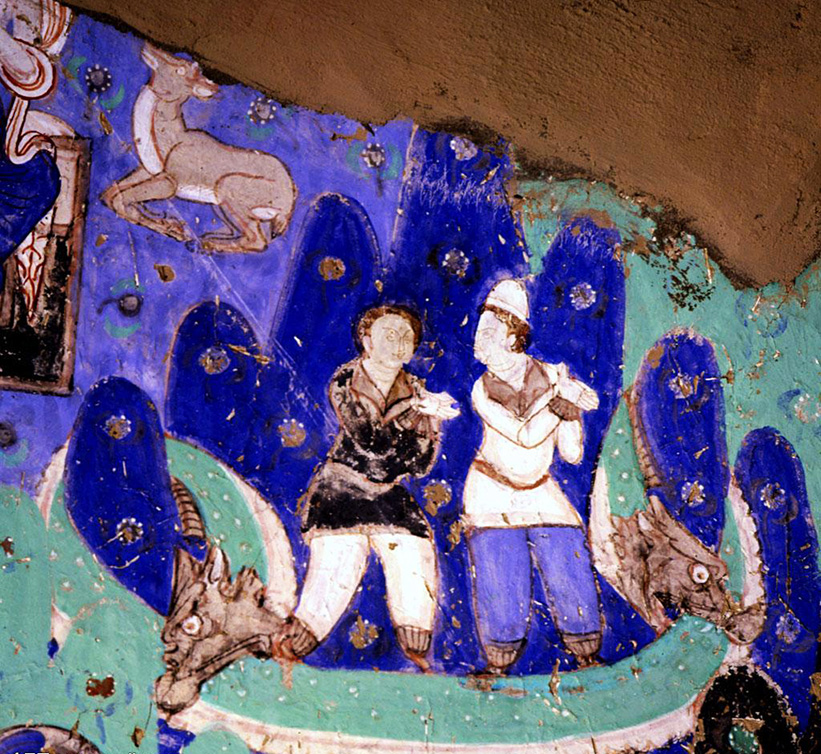
Top 10: Matisi Grottoes (Zhangye): Grottoes in the Cliff
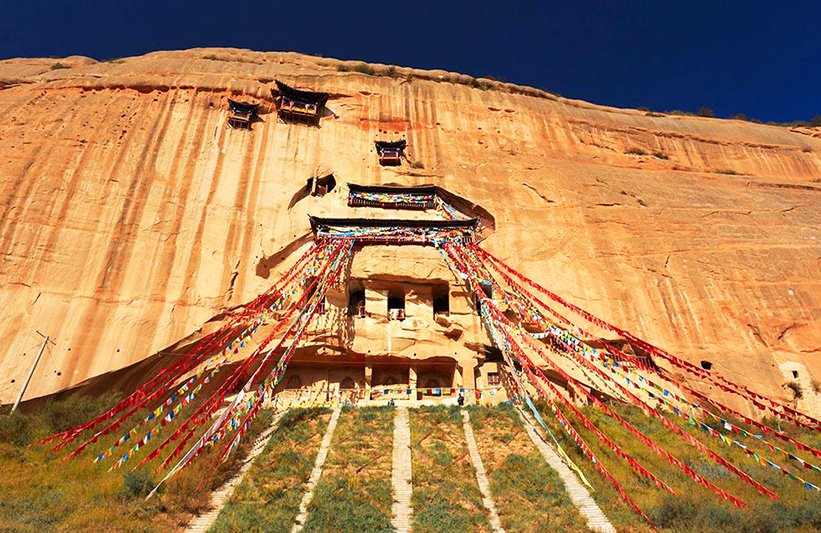
Matisi Grottoes (马蹄寺石窟), located 65 kilometers south of Zhangye City, together with Mogao Caves in Dunhuang, Yulin Grottos in Guazhou are regarded as Three Artistic Treasured Grottoes of Hexi Buddha Holy Land. A legend says that once a sacred horse left its footstep in a rock here, so Matisi Temple (also called Horse Hoof Temple) got its name.
Matisi Grottoes was first built in Northern Liang, with a history over 1600 years. It is a large complex over 70 caves, composed of Guosheng Temple, Puguang Temple, Thousand Buddha Cave, Golden Pagoda Temple, Upper Guanyin Grottoes, Central Guanyin Grottoes and Lower Guanyin Grottoes. Travelers who come to visit Matisi Grottoes can fully enjoy cave art, beautiful Qilian Mountain scenery and special Yugur ethnic customs. To know more Buddha statues and visiting route, please go and check our Matisi Temple.
Location
Sunan Yugu Nationality Autonomous County, Zhangye, Gansu Province. It is about 65 kilometers from Zhangye City.
How to Get There
This is no direct bus to reach Matisi Grottoes. It is recommended to take a taxi or use our private transfer service to this place.
Recommended Trip:
>> 9 Days In-depth Northwestern China Silk Road Tour (Dunhuang - Jiayuguan - Zhangye - Xining)
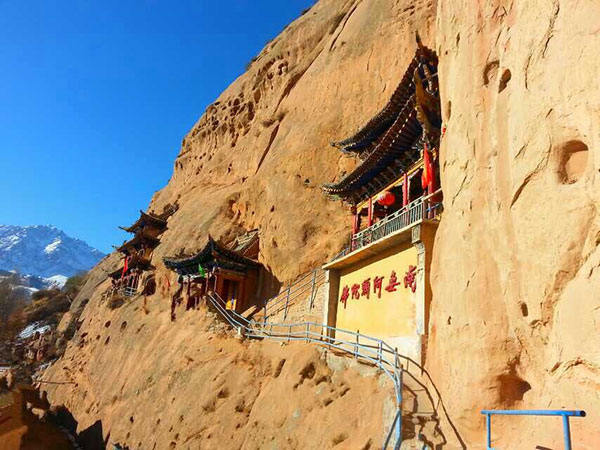
Explore Ancient Grottoes & Caves with China Discovery
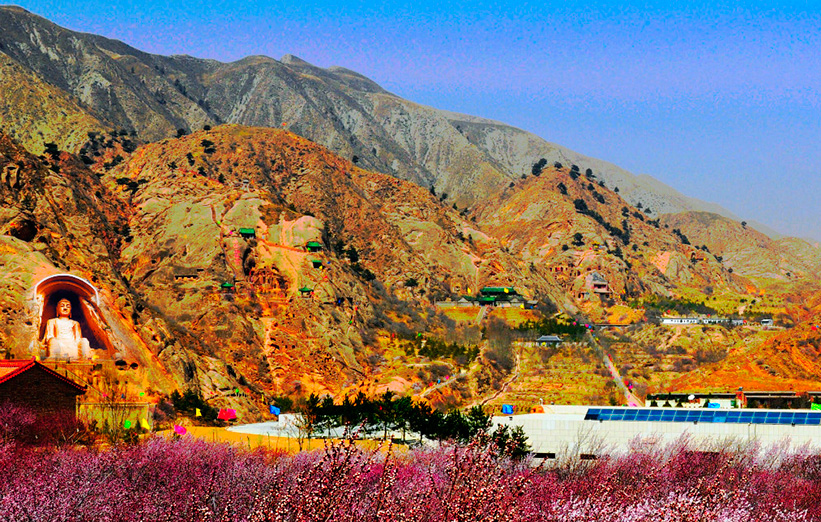
Besides the Top 10 Famous Grottoes listed above, there are still more caves for your discovery. You can extend to Mixushan Grottoes in Ningxia, Longyou Caves in Zhejiang Province, Gongxian Cave Temple in Henan Province and Xiangtanshan Grottoes in Hebei Province, etc.
Most of the famous, spectacular grottoes are located in northwest China and these places are relatively remote. If you want to enjoy worry free transfer and have deep understanding about the true art of Buddhist caves, you’d better go with China Discovery. We are here giving you professional suggestions, arranging a well-organized itinerary with private English-speaking guide and safe driver, taking you enter the holy land with precious Buddhist art.
Top Buddhist Grottoes and Caves in China
More Recommended Travel Articles
- Top 10 China Destinations in 2025
- Top 15 Things to Do for China Vacation
- China High Speed Train travel 2025
- Top Greatest Museums in China
- Best Destinations Listed by TripAdvisor
- Four Sacred Buddhist Mountains in China
- Four Famous Taoist Mountains in China
- Top 10 Buddhist Monasteries & Temples in China
Recommended Tours
Top 3 tours chosen by most customers to explore in the best way. Check the detailed itinerary, or tailor your own trip now with us.

5 Days Luoyang Shaolin Temple Tour from Xian
Xian / Luoyang / Dengfeng / Zhengzhou

8 Days Miraculous Land Tour from Dunhuang to Zhangye Xining
Dunhuang - Jiayuguan - Zhangye - Xining
Start planning your tailor-made holiday to China by contacting one of our specialists. Once inquired, you’ll get a response within 0.5~23.5 hours.
Customize a TripHave a question? Get answers from our travel experts or guests
- Your Question:
- Your Name:
- Your Email:
- Submit


























